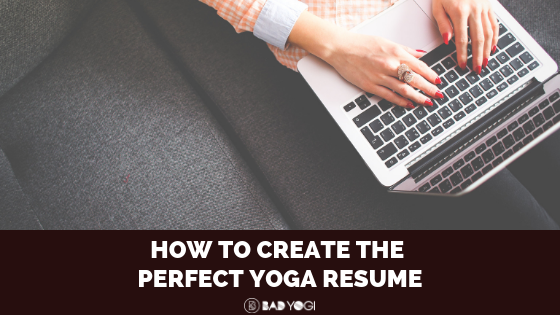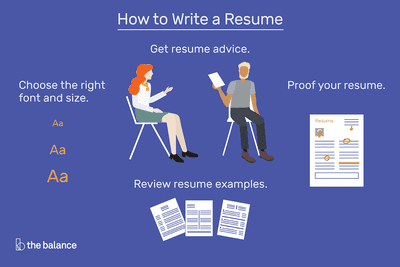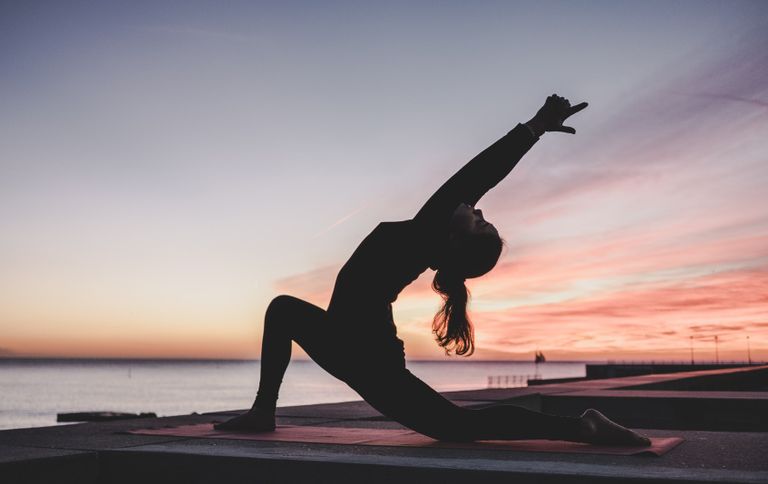It’s fair to say putting the words ‘yoga resumé’ & ‘new teacher’ in the same sentence may cause a few sharp inhales and nervous exhales. Perhaps even a disbelieving shake of the head.
I mean, how can you write a persuasive yoga teaching resumé, when you’re still paying off the loan you took out for your teacher training, you’ve barely had a chance to create your sequences and the only person you’ve ever taught is your mum?
That’s why I think you’re going to love this in-depth article giving you a step-by-step actionable guide to getting your first job as a professional yoga teacher. We’re going to cover exactly how you write a smoking hot new yoga teacher resumé – including that elusive but essential yoga bio – PLUS how you craft an engaging and credible covering letter that is guaranteed to get you a callback and a meeting. We’ll even take you through how to follow up like a true professional.
Here’s what we’ll cover*:
- New Yoga Teacher Resumé Do’s and Don’ts
- PLUS some examples – The Good & The Bad (Let’s not even think about The Ugly!)
- Yoga Resumé Cover Letters – what to say and, more importantly, what not to say
- Your Yoga Biography – how to tell your story and present it authentically
- Personal branding – How to make your yoga resumé stand out among a sea of boring bland documents
- Showcase Your Testimonials – How many? What should they say?
- How to Follow up like a Professional – once you’ve sent your resumé and covering letter
*use this handy guide to jump to the info that resonates with you the most!

The New Yoga Teacher Resumé
This is the Ganesha in the room, right? The word resumé relates to the corporate world; to job applications, interviews and maybe one day a corner office — whereas this is exactly the kind of thing most people look to escape when they choose to incorporate teaching yoga into their lives either full or part-time.
But let’s get real, unless you’re fortunate enough to be sitting on a large trust fund or lottery win, we all know that om-ing doesn’t pay the bills. More importantly, it’s one thing to be clutching your hot-off-the-press RYT certificate as a new yoga teacher, but we all know the magic happens when you start to clock up real-world teaching hours.
And what that means, in reality, is getting a job. Don’t assume that because you have a really strong practice, lots of different pieces of training or a famous guru as a mentor, that you will automatically be hired – you won’t. There is a clear process to followed and we’re here to give you actionable advice.
So without further ado let us show you how it’s done!
New Yoga Teacher Resumé Dos and Don’ts
The majority of newly qualified teachers will look to get a foot on the teaching career ladder by working at a studio or gym (although there are also a number of other ways to get started which we will be sharing within the next few weeks!) and for that my friends, yes you will need to work on that dreaded piece of paper.
Over the years, I’ve hired some excellent new teachers and had the privilege of reading several fantastic resumés — and on the flip side, some that weren’t so great….
Resumé writing is a particular skill, and the good news is that it’s not that hard if you follow a few simple rules. Creating a yoga specific document simply entails bearing the following points in mind. Let us know if you have anything you wish to add!
DO Make it Easy to Digest
Sounds very much like common sense, doesn’t it? Well, you would be surprised how the pressure of writing a ‘yoga’ resumé causes people to lose all concept of the basic rules of legibility: outcome the flowery fonts, the pastel highlights, and the soft-focus language.
Stick to the rules people. Think reverse chronological order. clear bullet points, and avoid yoga jargon and overly creative layouts.
Should you use a picture? In this Instagram obsessed age, I would suggest yes, but make it a decent headshot rather than your best pinch mayurasana (unless this is requested of course).
There’s a lot more to say on the layout – look to our PDF Guide at the end of this post for a blueprint that will show you exactly how to layout your CV and give you some ideas and inspiration for format.
DO Highlight your Training & Areas of Specialism
This is essentially the neon headline at the top of your resumé document. A potential employer will naturally want to understand where you trained and with whom, what the structure of the training was and whether you specialized in a particular style or not.

This may be your first yoga teaching job post-qualification, but I bet ten bucks you’ve also invested in additional training and workshops over the years. Without question, highlight these too, making the areas where you are particularly passionate – prenatal, yin, a friend of mine even describes herself as an ‘inversions junkie’ – stand out.
DON’T Discount Your Previous Experience
It’s very tempting to think that your former professional life suddenly doesn’t count when you write your first yoga resumé. How on earth can investment banking be relevant to teaching yoga, I hear you say?
The truth is that we all have something to bring to the party from our past commercial experience. Apart from anything else, the students in front of you on their mats will all be from different backgrounds and will appreciate the life experience you bring to your teaching.
Lastly, if you are looking to work with a studio or a gym then experience in digital, accounting or marketing can be highly valuable – so use this!
DON’T Forget the practical details
Again, it’s worth stating the obvious here. Are you looking for a full, part-time or temporary position? Where are you based and how far can you travel? Are you willing to relocate? Do you have other relevant holistic or fitness teaching skills to add weight to your application? What are your contact details! (yes I have seen CV/Cover Letter combinations with absolutely no way of getting in touch indicated – unbelievable I know)
Examples – The Good & The Bad (Let’s not even think about The Ugly!)
Okay, let’s get down to the nitty-gritty here. I am going to show you some real-world examples, drawing out some key learning points to bear in mind as you create your first yoga resumé.

I won’t even start to insult your intelligence by pulling out a truly horrendous example of a new teacher’s CV.
But take a look at the left. And let me count the ways, dear reader, in which this falls short.
- Short and superficial profile, no ‘story’ (see below for tips and tricks on how to write the perfect yoga bio!)
- Incomplete contact details, also these can be included in the cover letter to free up space in
- Non-yoga experience listed first, and no details are given
- Education, while important should feature last and should come after details of yoga teacher training
- The colors and crazy leaf detail? Oh no. Just don’t.
It’s not too hard to see where our dear friend Kate has gone wrong, is it? It’s a valiant effort, but you’ll need to try harder.
Let’s move on to a decent yoga resume – perhaps with some room to improve so you understand what it’s going to take your yoga resume from good to GREAT.
So please turn your attention to Miss Natalie Dawson. It’s not the most inspired version but there is an awful lot that is right about it. It’s also a great example of what can be done as a new teacher with no experience. Let’s take a closer look!

Firstly the layout, colors, and format are standouts without being too showy. And there is tons of other good stuff here too:

- The ‘About’ paragraph – needs more detail but its personal and passionate
- Yoga experience front and center even though this is a new teacher resume, and in reverse chronological order
- Other experience is also highlighted and relevant
- It’s a nice touch to include attributes and gives a more
- Social channels are included and contact details are all present and correct!
While it’s by no means perfect this is a vast improvement in our first example. How could it be improved? Well, the bio/about is very individual and difficult to simulate. More info on that below, but first…

Yoga Resumé Cover Letters – what to say and, more importantly, what not to say
Creating your new yoga teacher resumé may feel like climbing a mountain. Or getting into your first stable headstand for ten breaths. But once it’s done, don’t get too comfortable. Just because we live in a digitally-dominated time doesn’t mean that a two-line email can replace your yoga resumé covering letter.
A carefully crafted covering letter can mean the difference between getting the first meeting or being passed over along with a bundle of other first-time yoga resumés.
Most importantly, make sure it’s written in your voice – let passion and personality shine through (without becoming over-familiar) and don’t be shy about outlining precisely what you bring to the teacher’s mat.
Imagine you were reading it as a yoga studio owner and ad the question ‘so what?’ after every sentence. So rather than just listing the same information as you have on your yoga resumé, start describing how you can be an asset to their yoga studio and what makes you special and different.
Other points to note:
- Keep to one page! The main aim is to give people a reason to message or call you, not tell your life story
- Show you’ve done your research into what makes their studio stand out – perhaps reference a teacher or something that has made an impact on you from a marketing perspective
- Highlight what you can bring to the table and how you add value through your yoga teaching, not why they would be a great fit as a studio for you
- Give some indication of how they can experience your teaching. If an in-person trial class is not possible, then think about including a video
- And finally, to reiterate, make it VERY easy for them to contact you…full contact details in the header (address) and footer (email and mobile)
Your Yoga Biography – how to tell your story and present it authentically
Telling your yoga ‘story’ is particularly key if you don’t have a huge number of teaching hours just yet. There is a strong personal narrative behind every yoga teacher’s decision to teach. It’s your path, your journey if you will, but more importantly the story behind your decision to go pro will further highlight your passion and dedication.
This personal yoga bio doesn’t need to belong, but it does need to be engaging.
- Document inspiring travel or teachers, workshop experiences or retreats
- Describe the ‘a-ha!’ moment when you decided to do your yoga teacher training
- Talk about areas you find particularly challenging, and how you would like to see your yoga career evolve
- This passage of writing – your ‘core story’ is essentially the basis of your brand.
Personal branding – How to make your yoga resumé stand out among a sea of boring bland documents
On that note let’s spend some time talking about personal brand. What the hell is it and how is it relevant to what essentially amounts to two bits of paper? There are hundreds of definitions of personal brand available and we talk about it in some detail here.
Want the quick download as it pertains to your resumé and covering letter? Pay attention to the following:
Number #1 Write content from the heart. Try and find a style that’s all your own. Define your key values, and come back to them in all your written communication. Avoid cliches and look to motivate and inspire with your words!

Number #2 Be a perfectionist when it comes to the look and feel of your resumé – keep it clean, clear, light – eye-catching without being overly ‘creative’. Include links to social media channels or even a video introduction…
In short, your brand is really how people experience you – by engaging with your teaching, writing or speaking. It’s what people then say about you when you’re not in the room, so use these assets (resumé & covering letter) as a platform for letting the real you shine and stand out.
“I’ve learned that people will forget what you said, people will forget what you did, but people will never forget how you made them feel.” Maya Angelou
Showcase your testimonials – how many? what should they say?
As a new teacher, you might not have got around to this yet but I can tell you, the first time I asked someone for a testimonial I was shy and embarrassed. I mean, essentially you are asking a friend or student to blow sunshine up your proverbials, which, especially if you’re British, can be excruciatingly awkward.
However, the reality is yogis that word of mouth remains one of the most persuasive marketing tools at your disposal. All anyone wants to know is that someone just like them had a great experience in your class or at their event.
So, you find a few people to tell you how wonderful you are right? Not so fast. While compliments and positivity are an awesome sauce, the secret sauce lies in getting your students to describe what exactly they learned, how they grew, what tangible outcomes they achieved and perhaps what they found surprising along the way.
Ie. make it real, rather than unicorns and rainbows. Invite them to describe how they benefitted in a way that is unique to the relationship YOU’VE built with them as their teacher – above and beyond anyone else.
I recommend looking for 4-5 strong testimonials at first. People are usually delighted to write them and 100 words are enough to create some magic. If you don’t ask, the universe will not respond, so take a deep breath in and reach out.


How to follow up like a true professional once you’ve sent your yoga resumé and covering letter
When I worked in London as a city headhunter, friends would ask me for advice and input concerning their careers all the time. Occasionally they would lament the fact they had sent out 100s of resumés and cover letters and had had no response.
“But have you followed up?” I would ask. Invariably, they had not. They simply expected the meetings, phone calls and jobs to arrive on a magic carpet along with the tooth fairy and Santa Claus.
The yoga industry is as crowded and competitive as any others you might care to name. What’s more, everybody’s inboxes are overflowing, so ‘Well I sent a follow-up email…’ is not going to cut it.
This is where the confidence piece comes in. I’m sure you might feel, as a new yoga teacher with no experience, that reaching out to follow up on your written efforts might appear cheeky, or even worse, desperate.
I have news – that’s what every other new teacher in your shoes is feeling so hold your head high and make sure you do one of three things:
- Make a phone call, leave a message, be visible and top of mind
- Pop into the studio, see if the manager is free for a coffee
- Take a class and get to know the other teachers (a great option – try and do this anyway!)
Where are the resumes that you are referring to in the article?